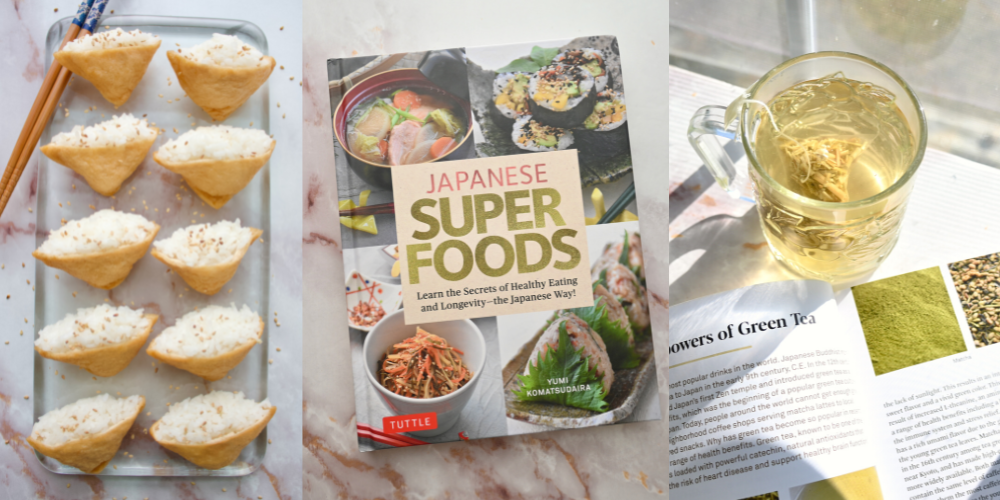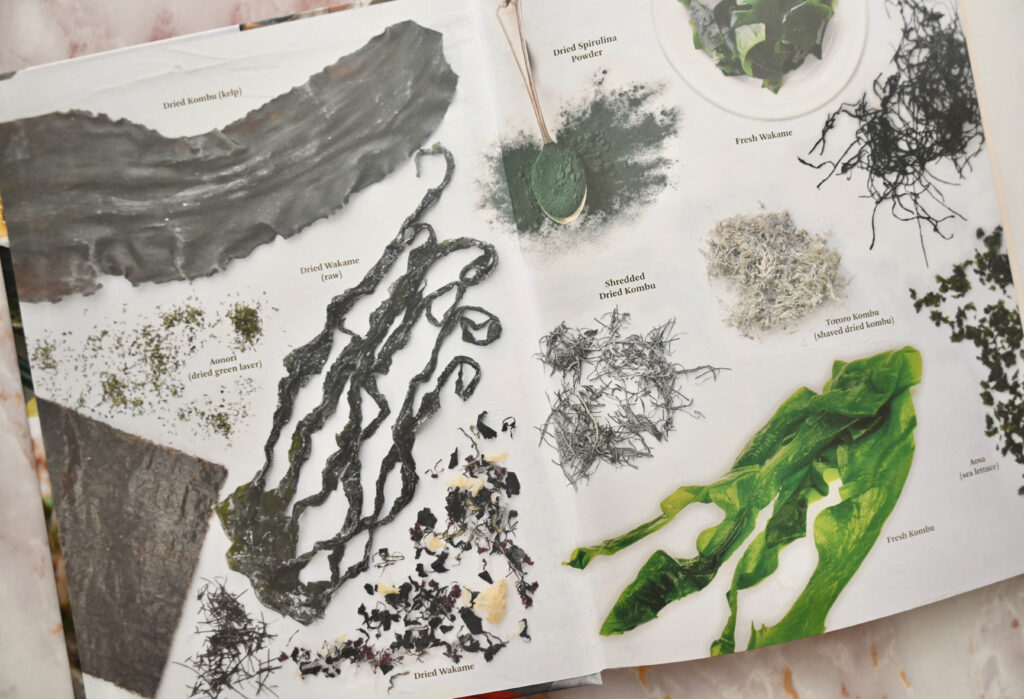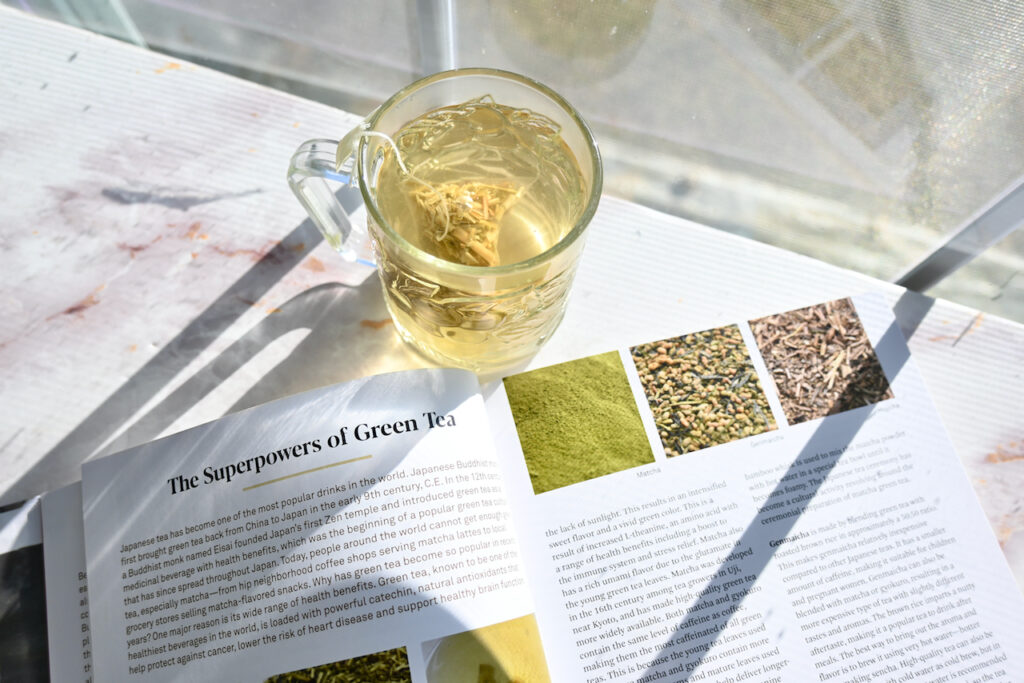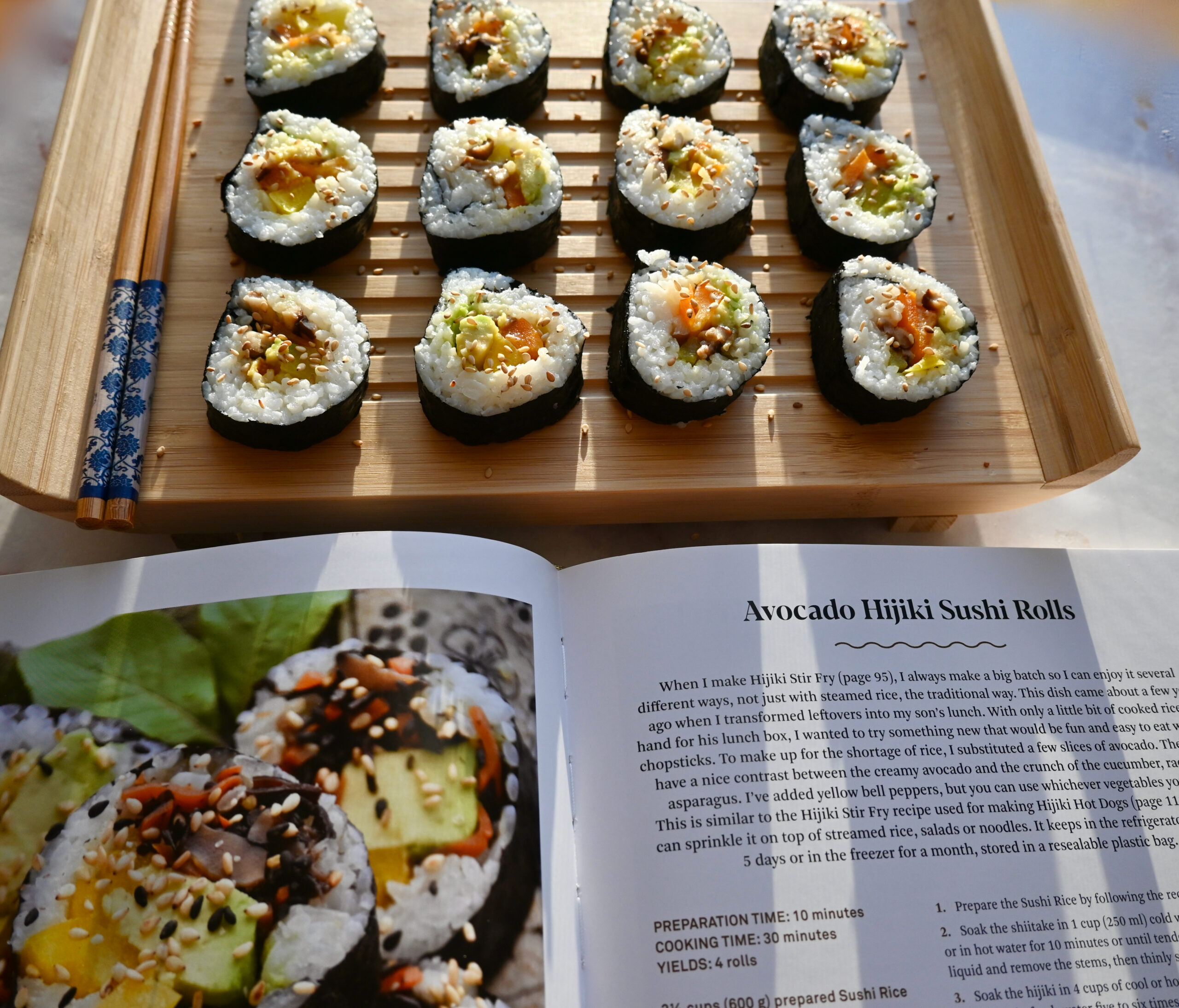Reviewing Japanese Superfoods, a Cookbook by Yumi Komatsudaira

My review of Yumi Komatsudaira’s cookbook, Japanese Superfoods, a beautiful and comprehensive book filled with appetising recipes and beautiful food photography.
This post may contain affiliate links. You can find more information under the Disclaimer at the bottom of the page.
A Short Introduction
Yumi Komatsudaira grew up in her family’s seaweed shop in Japan, so she has a lifetime of knowledge that she imparts in this beautiful cookbook. And she shares so much! This cookbook feels incredibly comprehensive, and I could (and did!) spend a lot of time just reading through all of the information she includes.
There are also loads of helpful tips scattered throughout Japanese Superfoods, placed within a gold circle with TIP clearly labelled at the top. These tips often add extra advice on food preparation, or hacks for simplifying the cooking process. I never knew you could loosen up fried tofu pockets by rolling them with chopsticks to help open them up. Now I do and it worked a treat!

Overview of Japanese Superfoods
This cookbook is a truly stunning. The photos of the recipes are beautifully shot. I especially love how, before you even get into the cookbook itself, the inside of the book jacket displays a number of sea plants, clearly labelled so you can see what they all look like. It’s a gorgeous effect. When you get into the cookbook, each recipe has a large photo to show you what the finished product looks like. Everything looks vibrant and super appetizing.
The first 61 pages of the book take you through a vast variety of Japanese Superfoods. I never knew there were so many, and there were a number I hadn’t heard of before! Yumi covers the different types of Sea Vegetables, Green Tea, Japanese Rice, Noodles, Dashi Stock, and pickles and even gets into the Art of Bento and Traditional Japanese Kitchen Utensils!
I found it really helpful to get descriptions of these superfoods, along with simple staple recipes, here at the front of the book. Yumi then refers back to these basic recipes throughout the rest of the cookbook, as they’re incorporated into a number of her other recipes.
The remainder of Japanese Superfoods consists of recipes, split into the categories of:
- Superfood Soups & Hot Pot
- Super-Healthy Sushi
- My Go-to Superfood Seaweed Recipes
- Super Seafood Dishes
- Rice, Noodles and Bread
- Soy, Sesame & Eggs
- Don’t Forget the Veggies
- Healthy Meat Dishes
- Healthy Desserts
Japanese Superfoods is not a completely plant-based cookbook, but as you can see, there’s a huge emphasis on vegetables and superfoods. There are lots of veggie recipes to explore, and many of the recipes that include meat/fish/egg are pretty easily veganized (by omitting the meat, subbing in tofu or mushrooms, etc).

Three Immediate Takeaways
Green Tea – I love green tea and matcha lattes (if you follow my Instagram, you’ve probably seen my matcha lattes – I have them almost daily). But reading about ‘The Superpowers of Green Tea’ made me even more motivated to enjoy these healthful drinks. I hadn’t realized there were so many different types of green tea (which Yumi breaks down in the cookbook). She includes storage and preparation tips as well.
Miso Soup – Did you know the most important ingredient in miso soup is not the miso (that’s second), but according to Yumi it’s the dashi? I’m almost embarrassed to admit that I spent my life making miso soup without any dashi. Adding dashi stock to miso adds so much depth of flavor and loads of healthful goodness too!
Kombu – The first Superfood ingredient Yumi covers in her cookbook in kombu. And the information about it is actually a delight to read about! She writes:
The word “kombu” is similar to the Japanese word for joy (yoro kobu), contributing to the idea that consuming kombu brings joy.
No other explanation needed! I don’t know about you, but I was sold on kombu from this opening sentence. Don’t worry, if you’re looking for a more comprehensive explanation about kombu and the benefits of adding it into your cooking, Yumi’s got you covered. She goes through the nutrition and numerous health benefits of kombu.
So of course, one of the first things I picked up after reading this cookbook was kombu. The next time I made rice I made sure to stick this a small piece of kombu into the pot while cooking. It’s so easy to do, and completely levels up your rice!

Recipes I’ve Tried (So Far) from Japanese Superfoods
- Japanese Rice, p. 30 – It’s always good to have a solid staple rice recipe, and Yumi shares one in the cookbook!
- Sushi Rice, p. 81 – The Sushi rice recipe is another important staple. I used it to try out the following two sushi recipes from the cookbook as well.
When my family’s gone on holiday with my nana, she would often make us sushi to take with us on the road. Sushi is the best travel meal, because it packs very easily, lasts a good amount of time outside the fridge, and can be eaten in the car or outside, with no hands necessary if you’re using chopsticks.
- Tofu Pocket Inari Sushi, p. 85 – When I began eating plant-based, my nana started making me Inari sushi because she wanted to make sure I had something to eat (her sushi contained meat and egg). I always thought it was some strange magic that made the outside tofu and the inside rice. Turns out, Inari sushi is so much easier to make than I’d thought though, and making these with Yumi’s recipe brought me right back to vacations with my nana.
- Avocado Hijiki Sushi Rolls, p. 89 – I’ve been on a sushi kick ever since I started making Korean gimbap inspired by Extraordinary Attorney Woo. So I always am up for exploring new variations of tofu. This combination of mushroom, avocado and veggies is delicious, and was a big hit with my fam as well!
Bookmarked Recipes from Japanese Superfoods
There are many more recipes I need to try out from this cookbook. Some that are at the top of my list are:
- Red Quinoa Salad with Hijiki and Kabocha Pumpkin, p. 97 – I love the use of quinoa and kabocha pumpkin in this one.
- Miso-glazed Grilled Rice Balls, p. 164 – This recipe looks simple and loaded with flavor, which is my kind of cooking!
- Vegan Tantan-Men, p. 143- Of course I immediately was drawn to this vegan recipe, and I have yet to try making my own ramen. So this needs to happen soon.
- Instant Miso Soup Balls, p. 57 – The idea of these is so fun! Basically you can meal prep miso soup by putting together some simple ingredients into a ball and storing them in the freezer. Then when you want miso soup, all you have to do is add a miso soup ball to a cup of boiling water. My dad especially loves miso soup, so this could be a game-changer in making miso soup nights even easier.
- The Art of Bento, p. 54 – Not a recipe, but I LOVE bento boxes. This guide on how to best use pack and make a bento box is so cute. And it really makes me want to get my hands on my own bento box.
Final Thoughts
I’ve been loving and learning from this cookbook, and can’t wait to continue my exploration through Japanese Superfoods, thanks to Yumi’s helpful guidance.
Check it out on Amazon if you’re interested, and if you’ve tried out of of the recipes from the book let me know your favorites!
*Thank you Tuttle Publishing for sending me a PR copy of this cookbook to review!
